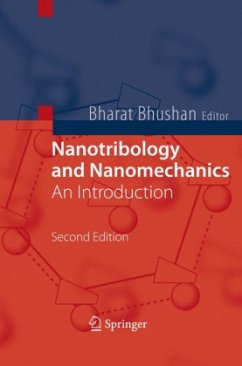The recent emergence and proliferation of proximal probes, e.g. SPM and AFM, and computational techniques for simulating tip-surface interactions has enabled the systematic investigation of interfacial problems on ever smaller scales, as well as created means for modifying and manipulating nanostructures. In short, they have led to the appearance of the new, interdisciplinary fields of micro/nanotribology and micro/nanomechanics.
This volume serves as a timely, practical introduction to the principles of nanotribology and nanomechanics and applications to magnetic storage systems and MEMS/NEMS. Assuming some familiarity with macrotribilogy/mechanics, the book comprises chapters by internationally recognized experts, who integrate knowledge of the field from the mechanics and materials-science perspectives. They cover key measurement techniques, their applications, and theoretical modelling of interfaces, each beginning their contributions with macro- and progressing to microconcepts. After reviewing the fundamental experimental and theoretical aspects in the first part, Nanotribology and Nanomechanics then treats applications.
Three groups of readers are likely to find this text valuable: graduate students, research workers, and practicing engineers. It can serve as he basis for a comprehensive, one- or two-semester course in scanning probe microscopy; applied scanning probe techniques; or nanotribology/nanomechanics/nanotechnology, in departments such as mechanical engineering, materials science, and applied physics.
With a Foreword by Physics Nobel Laureate Gerd Binnig
This volume serves as a timely, practical introduction to the principles of nanotribology and nanomechanics and applications to magnetic storage systems and MEMS/NEMS. Assuming some familiarity with macrotribilogy/mechanics, the book comprises chapters by internationally recognized experts, who integrate knowledge of the field from the mechanics and materials-science perspectives. They cover key measurement techniques, their applications, and theoretical modelling of interfaces, each beginning their contributions with macro- and progressing to microconcepts. After reviewing the fundamental experimental and theoretical aspects in the first part, Nanotribology and Nanomechanics then treats applications.
Three groups of readers are likely to find this text valuable: graduate students, research workers, and practicing engineers. It can serve as he basis for a comprehensive, one- or two-semester course in scanning probe microscopy; applied scanning probe techniques; or nanotribology/nanomechanics/nanotechnology, in departments such as mechanical engineering, materials science, and applied physics.
With a Foreword by Physics Nobel Laureate Gerd Binnig

